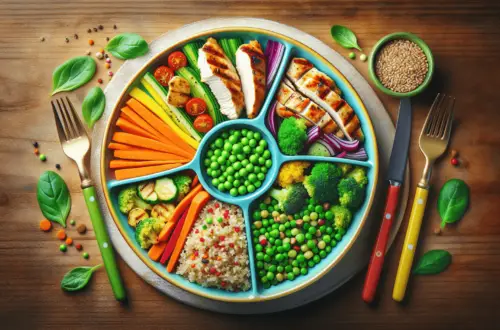Sure!
Imagine you’re on a journey to better health, and you come across the DASH diet—a nutritious and heart-friendly eating plan that’s been shown to help manage blood pressure. In this article, “Can The DASH Diet Help Lower Blood Pressure?”, you’ll explore how this diet, rich in fruits, vegetables, whole grains, and lean proteins, can be a game-changer for your well-being. By delving into its benefits and practical tips, you’ll see how adopting the DASH diet can make a significant difference in your daily life and overall cardiovascular health. Have you ever wondered if changing your diet could significantly impact your blood pressure? You’re not alone. With so many different diets and health plans out there, it’s easy to get overwhelmed or confused about what’s truly effective. One particularly promising approach is the DASH diet. But can the DASH diet help lower blood pressure?

What Is the DASH Diet?
The DASH diet, which stands for Dietary Approaches to Stop Hypertension, is a dietary plan designed to combat high blood pressure. Developed by the National Institutes of Health, this diet emphasizes fruits, vegetables, whole grains, lean proteins, and low-fat dairy products. It focuses on reducing sodium intake and increasing nutrient-rich foods that are known to help lower blood pressure.
The Basics of the DASH Diet
Understanding the basic principles of the DASH diet will help you see how it can positively affect your health. Here’s a quick break down:
- Fruits and Vegetables: Aim for 4-5 servings each per day. These are rich in vitamins, minerals, and fiber, all essential for heart health.
- Whole Grains: 6-8 servings per day. Whole grains provide energy and nutrients, such as magnesium, which is known to help regulate blood pressure.
- Lean Proteins: 2 or fewer servings of lean meat, poultry, or fish. Plant-based proteins, like legumes and nuts, should be consumed 4-5 times a week.
- Low-Fat Dairy: 2-3 servings per day. These provide calcium and vitamin D, which are vital for maintaining healthy blood pressure levels.
Here’s a table to make it clear:
| Food Group | Servings per Day/Week |
|---|---|
| Fruits | 4-5 servings per day |
| Vegetables | 4-5 servings per day |
| Whole Grains | 6-8 servings per day |
| Lean Proteins | 2 or fewer servings per day |
| Plant-Based Proteins | 4-5 servings per week |
| Low-Fat Dairy | 2-3 servings per day |
The Science Behind the DASH Diet
The DASH diet isn’t just a fad; it’s backed by robust scientific research. Studies have shown that following the DASH diet can lower systolic blood pressure (the top number in a blood pressure reading) by 8-14 points, which can make a significant difference in your risk for heart disease and stroke. How does it work? The diet increases your intake of potassium, calcium, and magnesium, which helps to relax blood vessels and excrete sodium through urine.
Implementation: How to Start the DASH Diet
If you’re ready to give the DASH diet a try, it’s essential to know how to implement it correctly. The key is to make gradual changes to your eating habits rather than trying to overhaul your diet all at once.
Step-by-Step Guide to Starting the DASH Diet
- Assess Your Current Diet: Keep a food diary for a week to understand your current eating habits.
- Shop Smart: Stock up on fruits, vegetables, whole grains, lean proteins, and low-fat dairy.
- Gradual Changes: Begin by adding a serving of fruits and vegetables to each meal.
- Track Your Progress: Monitor your blood pressure regularly to see how the dietary changes are affecting it.
- Stay Hydrated: Drinking plenty of water can help your body manage sodium levels better.
- Seek Support: Consider consulting a dietitian for personalized advice.
Practical Tips for Staying on Track
- Meal Prep: Prepare several DASH-friendly meals in advance to make it easier to stick to the plan.
- Snack Smart: Keep healthy snacks like cut-up veggies or a piece of fruit within reach.
- Dine Out Wisely: Choose restaurants that offer healthy options and don’t hesitate to ask for modifications to fit the DASH guidelines.
- Stay Motivated: Remember why you started; keeping end goals in sight can help you stay committed.
Sample Meal Plan for a Day
To give you an idea of what a day on the DASH diet might look like, here’s a simple meal plan:
- Breakfast: Oatmeal topped with fresh berries, a small handful of nuts, and a glass of low-fat milk.
- Lunch: Grilled chicken salad with mixed greens, cherry tomatoes, cucumbers, and a whole-grain roll.
- Snack: Apple slices with a tablespoon of almond butter.
- Dinner: Baked salmon, steamed broccoli, and quinoa.
- Dessert: A cup of low-fat yogurt topped with sliced peaches.
Benefits of the DASH Diet Beyond Lowering Blood Pressure
While its primary goal is to lower blood pressure, the DASH diet offers numerous other health benefits.
Weight Management
The DASH diet emphasizes nutrient-dense foods that are naturally lower in calorie density. By focusing on whole foods like fruits, vegetables, and whole grains, you can feel full and satisfied while consuming fewer calories, which aids in weight loss or management.
Improved Heart Health
By lowering blood pressure and cholesterol levels, the DASH diet also reduces your risk of developing heart diseases. The emphasis on lean proteins and healthy fats can improve blood lipid profiles and reduce inflammation.
Enhanced Nutrient Intake
The DASH diet ensures you get adequate amounts of essential nutrients like potassium, calcium, and magnesium. These nutrients play a critical role in maintaining overall health, including bone health and cellular function.
Reduced Risk of Diabetes
Following the DASH diet can help improve insulin sensitivity, thereby lowering your risk of developing Type 2 diabetes. The diet’s focus on complex carbohydrates and fiber can help maintain stable blood sugar levels.
Better Digestive Health
The high fiber content from fruits, vegetables, and whole grains promotes a healthy digestive system. Regular bowel movements and the prevention of digestive issues like constipation are other added benefits.
Potential Downsides and Considerations
While the DASH diet is beneficial for many people, it’s not without its potential downsides.
Initial Adjustment Period
If your current diet is high in sodium and low in fruits and vegetables, transitioning to the DASH diet can initially be challenging. You might experience digestive changes as your body adapts to the increased fiber intake.
Cost
Fresh fruits, vegetables, and lean proteins can sometimes be more expensive than processed foods. However, planning meals and buying in-season produce can help mitigate these costs.
Individual Variability
Some people may experience different results based on their unique health conditions and genetic factors. What works wonders for one person may not be as effective for another.

Combining DASH with Other Lifestyle Changes
To maximize the benefits of the DASH diet, it’s crucial to combine it with other healthy lifestyle changes.
Regular Exercise
Physical activity is vital for overall health and can help lower blood pressure. Aim for at least 150 minutes of moderate exercise or 75 minutes of vigorous exercise per week.
Stress Management
Chronic stress can elevate blood pressure. Techniques such as mindfulness, meditation, and deep-breathing exercises can be effective in managing stress levels.
Limit Alcohol and Quit Smoking
Alcohol and tobacco can both negatively impact blood pressure. Limiting alcohol intake and quitting smoking can further enhance the benefits of the DASH diet.
FAQs About the DASH Diet
Is the DASH Diet Suitable for Everyone?
The DASH diet is suitable for most people, but if you have any specific medical conditions or dietary restrictions, it’s always best to consult with a healthcare provider before making significant changes to your diet.
How Quickly Will I See Results?
Some people notice improvements in blood pressure within just a few weeks of following the DASH diet. However, for sustained results, long-term adherence to the diet is crucial.
Can I Adapt the DASH Diet if I am Vegetarian or Vegan?
Absolutely! The DASH diet can be tailored to fit a vegetarian or vegan lifestyle. Focus on plant-based proteins such as beans, lentils, tofu, and nuts.
Are There Any Specific Foods that Should Be Avoided?
High-sodium, processed foods, sugary beverages, and excessive amounts of red meat should be limited or avoided to maximize the benefits of the DASH diet.

Conclusion
So, can the DASH diet help lower blood pressure? Absolutely! The evidence is compelling, and the benefits extend beyond just lowering blood pressure. From weight management to improved heart health and beyond, the DASH diet is a well-rounded, nutrient-rich plan that can make a significant difference in your overall health.
If you’re serious about lowering your blood pressure and improving your health, the DASH diet is a great place to start. Remember to make gradual changes, stay motivated, and consult healthcare providers for personalized advice. Your journey toward better health begins with the choices you make every day, and the DASH diet can be a cornerstone of that healthier lifestyle. So why not give it a try? You might be amazed at how much better you feel.





